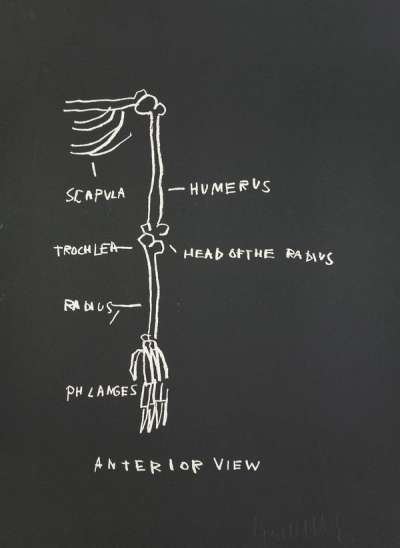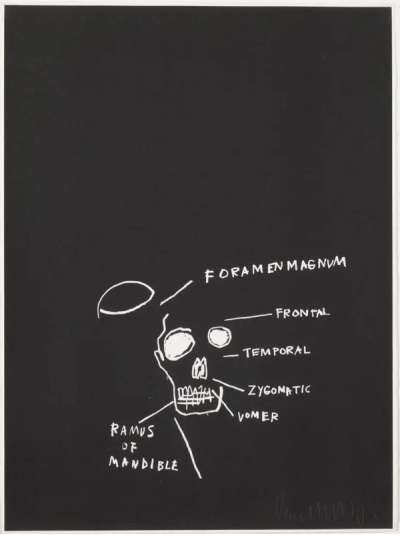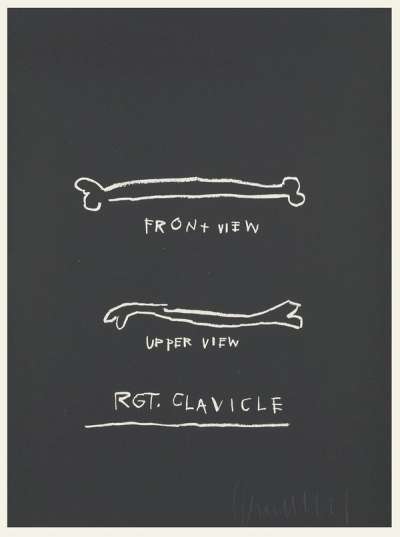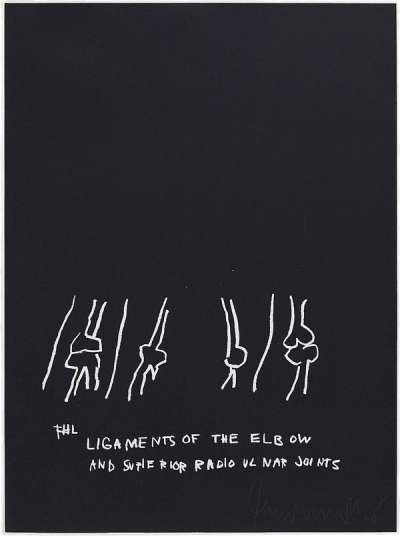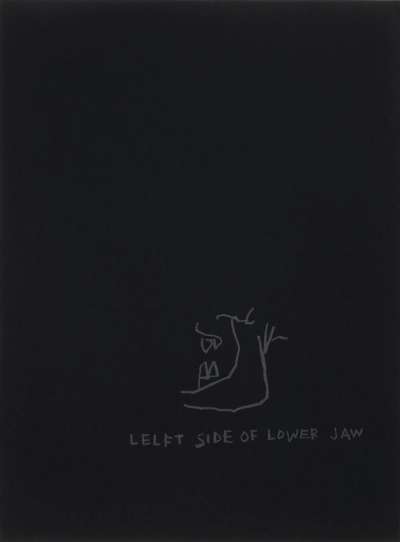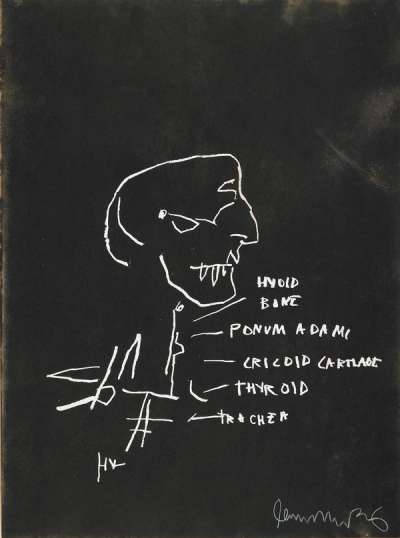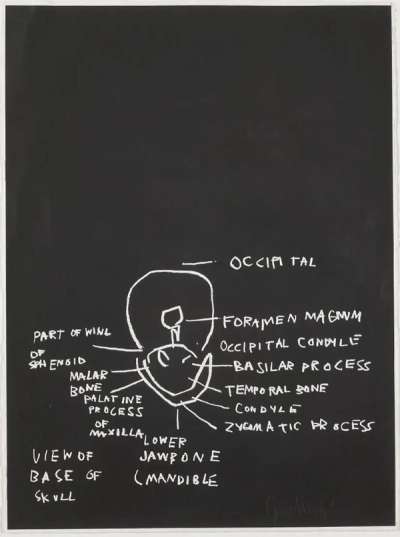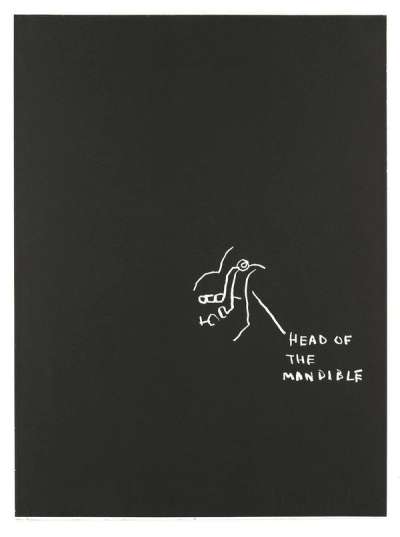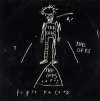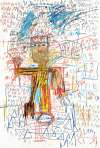Anatomy
Though typical in subject matter, Jean-Michel Basquiat’s Anatomy series stands out from the artist’s oeuvre for its comparative calm and simplicity. His obsessive interest in the minutiae of the human body takes hold of his often frenetic hand in these prints, which see anatomical references closely cropped and labelled white-line drawings on black.
Jean-Michel Basquiat Anatomy For sale
Anatomy Value (5 Years)
With £102540 in the past 12 months, Jean-Michel Basquiat's Anatomy series is one of the most actively traded in the market. Prices have varied significantly – from £2514 to £236521 – driven by fluctuations in factors like condition, provenance, and market timing. Over the past 12 months, the average selling price was £17090, with an average annual growth rate of -7.29% across the series.
Anatomy Market value
Auction Results
| Artwork | Auction Date | Auction House | Return to Seller | Hammer Price | Buyer Paid |
|---|---|---|---|---|---|
 Anatomy, 3 Views Of The Shoulder Joint Opened Jean-Michel Basquiat Signed Print | 26 Feb 2025 | Christie's New York | £9,350 | £11,000 | £15,000 |
 Anatomy, Ligaments Of The Elbow Jean-Michel Basquiat Signed Print | 26 Feb 2025 | Christie's New York | £12,325 | £14,500 | £20,000 |
 Anatomy, The Scapula Jean-Michel Basquiat Signed Print | 26 Feb 2025 | Christie's New York | £11,900 | £14,000 | £19,000 |
 Anatomy, Thyroid Jean-Michel Basquiat Signed Print | 22 Oct 2024 | Sotheby's New York | £16,150 | £19,000 | £26,000 |
 Anatomy, Vertical Median Jean-Michel Basquiat Signed Print | 26 Mar 2024 | Bonhams New York | £14,450 | £17,000 | £22,000 |
 Anatomy, Head Of The Mandible Jean-Michel Basquiat Signed Print | 14 Mar 2024 | Christie's New York | £17,000 | £20,000 | £27,000 |
 Anatomy, Ramus Of Mandible Jean-Michel Basquiat Signed Print | 3 Jul 2022 | De Baecque & Associates - Lyon | £5,950 | £7,000 | £9,000 |
 Anatomy (complete set) Jean-Michel Basquiat Signed Print | 24 Oct 2017 | Sotheby's New York | £178,500 | £210,000 | £280,000 |
Sell Your Art
with Us
with Us
Join Our Network of Collectors. Buy, Sell and Track Demand
Meaning & Analysis
In contrast to the chaotic, explosive character of his canvases, the Anatomy series presents the artist’s obsessive interest in the minutiae and intricate details of the human body in isolation. While the monochromatic simplicity of this series contrasts strongly with the bold use of colour with which his legacy is associated, Anatomy is inexorably linked to the entirety of his catalogue due to the way in which anatomical references are visible in pieces produced throughout his career.
Basquiat was involved in a car accident when he was eight years old, as a result of which he was taken to the hospital with multiple injuries and a broken arm. It was during this period that his mother presented him with a copy of the canonical medical encyclopaedia Gray's Anatomy (1878), which he promptly devoured. During his recuperation, he spent hours poring over the illustrations of the human body contained within the massive tome. The plethora of anatomical depictions of various kinds found in his work, ranging from the anatomical drawings featured in the frenetic collage entitled Jesse (1983) to this series of diagrammatic images showing various parts of the body, was no doubt heavily influenced by his experiences. The collection also demonstrates the influence of Leonardo Da Vinci's annotated manuscripts, which Basquiat owned.
